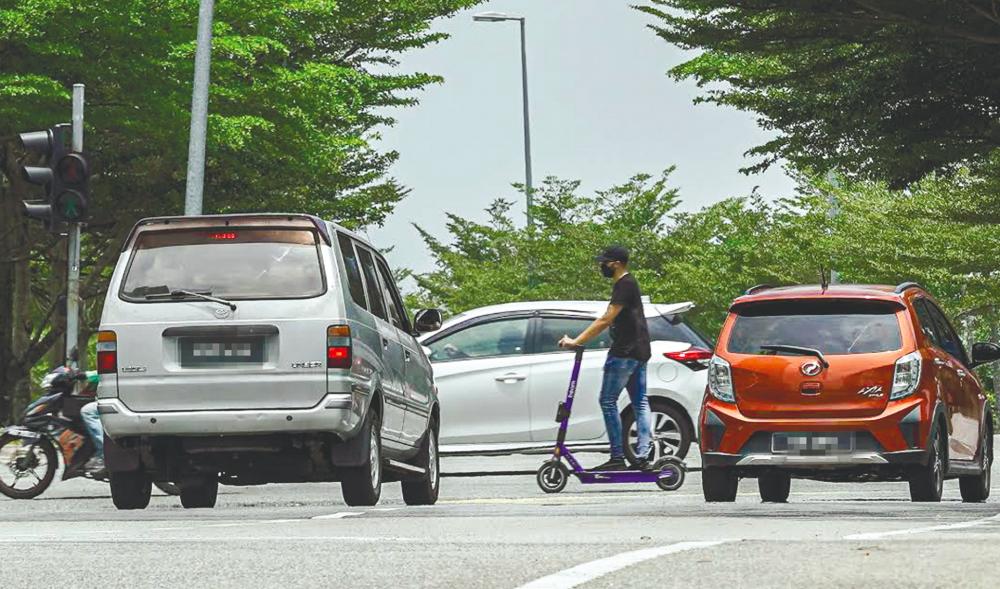PETALING JAYA: Thorough studies and clear guidelines are needed on the use of micro-mobility vehicles before they are allowed on public roads, said Malaysian Institute of Road Safety Research president Prof Dr Wong Shaw Voon.
Commenting on a statement by Transport Minister Datuk Seri Wee Ka Siong that the ministry would come up with bylaws relating to the use of e-scooters, including the implementation of licences for e-scooter users and suppliers, he said: “The dos and don’ts when using micro-mobility vehicles is currently in a grey area.
“It is also very important to know the objectives to be achieved while using such vehicles. Are we using them to replace walking, meaning it will be mixed among pedestrians on the walk paths? If yes, then the speed of such vehicles should be far lower than that of a motorcycle,” he told theSun.
Wong said any type of e-vehicle or micro-mobility vehicle that can go over the speed of 50kph should not be allowed on pedestrian walkways.
Additionally, if such vehicles share public roads and pedestrian walkways with other road users, proper and clear guidelines should be put in place to ensure safety is prioritised.
“We want to keep all road users and pedestrians safe and the best way would be to ensure we understand the type of vehicles we allow on the roads.”
Wong added that motorcycles were the most dangerous type of transport, and if the government were to introduce another option, it should not be more dangerous than a motorcycle.
An international study in 2019 found that motorcyclists were about 30 times more likely than any other passenger vehicle occupants to die in a motor vehicle crash. They were also four times more likely to be injured.
Wong said the type of brakes used, how the vehicle manoeuvres and the dynamics of balancing should be similar to or better than motorcycles, and signal indicators should also be considered.
“We cannot have another vehicle being introduced that presents more danger than motorcycles,” he said, adding that if it becomes necessary, micro-mobility vehicle users should also undergo proper training before they are allowed to use their vehicles on public roads.
“I believe the government’s main objective of having bylaws to govern the use of micro-mobility vehicles is so that innovative ideas such as e-vehicles are not discouraged from use.
“Simultaneously, we must ensure the minimum safety is kept and if possible, we should also further improve general road safety when it comes to the usage of these vehicles,” he said.
According to the Road Transport Department, the use of electric bicycles and scooters are not allowed on public roads and can only be used on private property.
This is due to the difference in the maximum speed of electric bicycles with other vehicles, that can have various implications on the road.
Former Transport minister Anthony Loke concurred with Wong on the need for clear guidelines on the use of micro-mobility vehicles.
However, he said it was not just about licensing but guidelines are needed on how and where such vehicles can be used.
“I don’t think highways are suitable for them.”
Loke said the bylaws must also take into account the safety of other road users, especially pedestrians, adding that such vehicles must not be allowed on pedestrian walkways.















